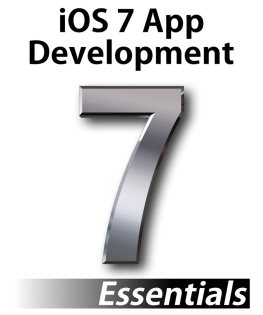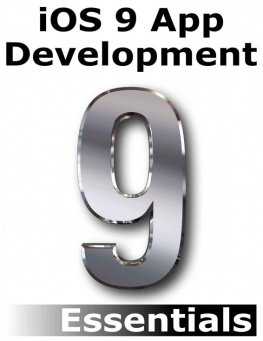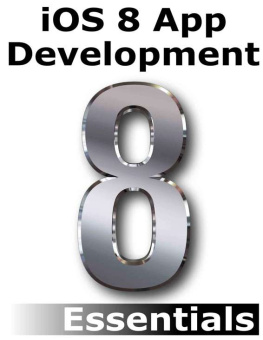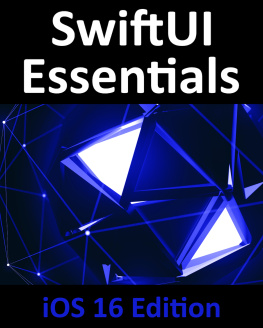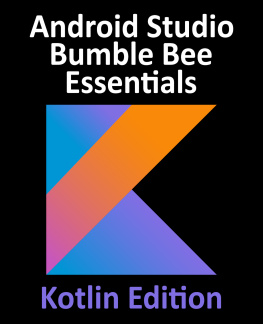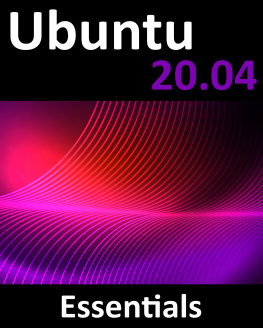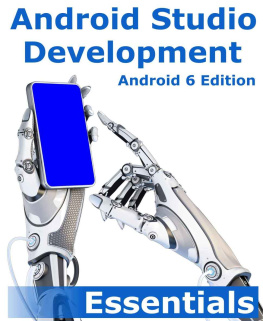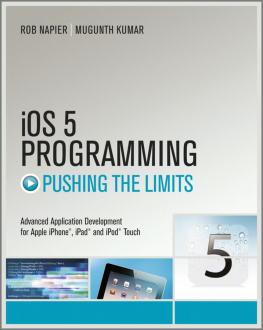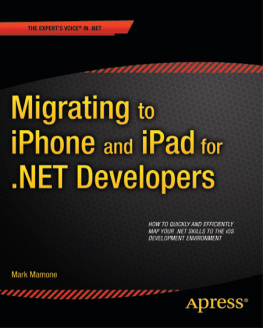2013 Neil Smyth/eBookFrenzy. All Rights Reserved.
This book is provided for personal use only. Unauthorized use, reproduction and/or distribution strictly prohibited. All rights reserved.
The content of this book is provided for informational purposes only. Neither the publisher nor the author offers any warranties or representation, express or implied, with regard to the accuracy of information contained in this book, nor do they accept any liability for any loss or damage arising from any errors or omissions.
This book contains trademarked terms that are used solely for editorial purposes and to the benefit of the respective trademark owner. The terms used within this book are not intended as infringement of any trademarks.
Rev 1. 0
1. Start Here
When the first iPhone was launched in 2007 it was largely dismissed as a potential threat by the incumbent handset manufacturers of the time. Similarly, the launch of the iPad three years later appeared to be of little concern to the giants of the Personal Computer industry. The reasoning at the time was that a tablet was simply a large smartphone that targeted an entirely different market to that of desktop PCs and laptops. The assumption was also made that if tablets became successful, Microsoft would simply find a way to dominate the market with a tablet-friendly version of Windows running on tablets from companies like Dell and HP.
Fast forward to today and consider just a handful of news headlines from the summer of 2013:
BlackBerry goes up for sale after years of struggle in smartphone market. The Guardian
BlackBerry to lay off up to 40% of its workforce. Wall Street Journal
Microsoft Takes $900 Million Write-off on Tablet. Wall Street Journal
Microsoft chief Steve Ballmer to retire within 12 months. BBC News
Microsoft to Buy Nokia's Device Unit. - Bloomberg
Dell's Profit Declines 72% on Sluggish Sales of PCs. New York Times
HP posts revenue decline as PC sales weaken further. VentureBeat
Not so long ago such headlines would have been unthinkable given the former success and market share held by the companies in question. What is particularly notable about these headlines, however, is that the events that prompted these news stories can all be traced back, at least in part, to one cause the continued success of tablets and smartphones. The real problem for the companies mentioned in the headlines, however, is that the majority of these devices are not running operating systems from Microsoft, Nokia or Blackberry. They are, instead, predominantly running either iOS or Android.
As of June 2013, Apple had sold more than 400 million iOS based devices worldwide in the form of iPhones and iPads. The fact is, the technology landscape has changed dramatically in recent years and if you arent writing apps for iOS yet, you probably should think about starting.
The goal of this book is to get you up to speed on both iOS development in general and the new features of the iOS 7 SDK.
How you make use of this book will depend to a large extent on whether you are new to iOS development, or have worked with iOS 6 and need to get up to speed on the features of iOS 7. Rest assured, however, that the book is intended to address both category of reader.
1.1 For New iOS Developers
If you are entirely new to iOS development then the entire contents of the book will be relevant to you.
Beginning with the basics, this book provides an outline of the steps necessary to set up an iOS development environment. An introduction to the architecture of iOS 7 and programming in Objective-C is provided, followed by an in-depth look at the design of iOS applications and user interfaces. More advanced topics such as file handling, database management, in-app purchases, graphics drawing and animation are also covered, as are touch screen handling, gesture recognition, multitasking, iAds integration, location management, local notifications, camera access and video and audio playback support. Other features are also covered including Auto Layout, Twitter and Facebook integration, event reminders, App Store hosted in-app purchase content, collection views and much more. New features of iOS 7 are also covered, including Sprite Kit-based game development, local map search and user interface animation using UIKit dynamics.
The aim of this book, therefore, is to teach you the skills necessary to build your own apps for iOS 7. Assuming you are ready to download the iOS 7 SDK and Xcode, have an Intel-based Mac and some ideas for some apps to develop, you are ready to get started.
1.2 For iOS 6 Developers
If you have already read the iPhone or iPad editions of iOS 6 Development Essentials, or have experience with the iOS 6 SDK then you might prefer to go directly to the new chapters in this iOS 7 edition of the book.
All chapters have been updated to reflect the changes and features introduced as part of iOS 7 and Xcode 5. Chapters included in this edition that were not contained in the previous edition, or have been significantly rewritten for iOS 7 and Xcode 5 are as follows:
In addition the following changes have also been made:
All provisioning examples have been updated to use the new Capabilities settings panel in Xcode 5.
All code examples have been modified were necessary for compatibility with both the 32-bit and 64-bit CPU architectures.
has been rewritten to use Storyboard instead of NIB files.
has been updated to cover the new Preview Assistant and performance monitoring features of Xcode 5.
chapter has been extended to include coverage of features such as shadowing and gradients.
has also been updated to use the animation block methods approach to animating user interface objects.
1.3 Source Code Download
The source code and Xcode project files for the examples contained in this book are available for download at:
http://www.ebookfrenzy.com/direct/ios7/
1.4 Feedback
We want you to be satisfied with your purchase of this book. If you find any errors in the book, or have any comments, questions or concerns please contact us at .
1.5 Errata
Whilst we make every effort to ensure the accuracy of the content of this book, it is inevitable that a book covering a subject area of this size and complexity may include some errors and oversights. Any known issues with the book will be outlined, together with solutions at the following URL:
http://www.ebookfrenzy.com/errata/ios7.html
In the event that you find an error not listed in the errata, please let us know by emailing our technical support team at .
2. Joining the Apple iOS Developer Program
The first step in the process of learning to develop iOS 7 based applications involves gaining an understanding of the differences between Registered Apple Developers and iOS Developer Program Members. Having gained such an understanding, the next choice is to decide the point at which it makes sense for you to pay to join the iOS Developer Program. With these goals in mind, this chapter will cover the differences between the two categories of developer, outline the costs and benefits of joining the developer program and, finally, walk through the steps involved in obtaining each membership level.
2.1 Registered Apple Developer
There is no fee associated with becoming a registered Apple developer. Simply visit the following web page to begin the registration process:

